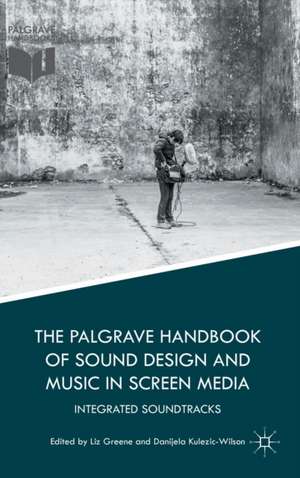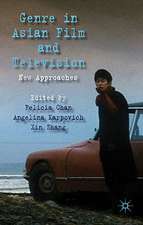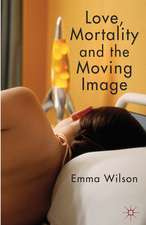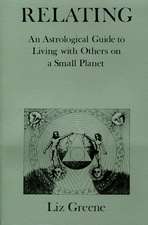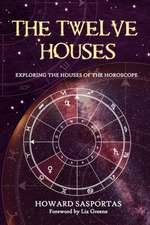The Palgrave Handbook of Sound Design and Music in Screen Media: Integrated Soundtracks
Editat de Liz Greene, Danijela Kulezic-Wilsonen Limba Engleză Hardback – 23 dec 2016
| Toate formatele și edițiile | Preț | Express |
|---|---|---|
| Paperback (1) | 238.22 lei 6-8 săpt. | |
| Palgrave Macmillan UK – 16 iul 2020 | 238.22 lei 6-8 săpt. | |
| Hardback (1) | 765.60 lei 6-8 săpt. | |
| Palgrave Macmillan UK – 23 dec 2016 | 765.60 lei 6-8 săpt. |
Preț: 765.60 lei
Preț vechi: 933.65 lei
-18% Nou
Puncte Express: 1148
Preț estimativ în valută:
135.46€ • 157.81$ • 118.29£
135.46€ • 157.81$ • 118.29£
Carte tipărită la comandă
Livrare economică 17-31 ianuarie 26
Preluare comenzi: 021 569.72.76
Specificații
ISBN-13: 9781137516794
ISBN-10: 1137516798
Pagini: 526
Ilustrații: XIX, 468 p. 14 illus., 2 illus. in color.
Dimensiuni: 155 x 235 x 27 mm
Greutate: 0.86 kg
Ediția:1st ed. 2016
Editura: Palgrave Macmillan UK
Colecția Palgrave Macmillan
Locul publicării:London, United Kingdom
ISBN-10: 1137516798
Pagini: 526
Ilustrații: XIX, 468 p. 14 illus., 2 illus. in color.
Dimensiuni: 155 x 235 x 27 mm
Greutate: 0.86 kg
Ediția:1st ed. 2016
Editura: Palgrave Macmillan UK
Colecția Palgrave Macmillan
Locul publicării:London, United Kingdom
Cuprins
2. Introduction, Liz Greene and Danijela Kulezic-Wilson.- Part I BOUNDARIES AND THEIR DISINTEGRATION.- 2. From Noise: Blurring the Boundaries of the Soundtrack, Liz Greene.- 3. Interview 1: Sound Recording, Sound Design and Collaboration: An interview with Ann Kroeber, Liz Greene.- 4. Organizing Sound: Labour Organizations and Power Struggles that Helped Define Music and Sound in Hollywood, Gianluca Sergi.- 5. Mixing as a Hyperorchestration Tool, Sergi Casanelles.- 6. Emotional Sound Effects and Metal Machine Music: Soundworlds in Silent Hill Games and Films, K.J. Donnelly.- Part II PRESENCE, IMMERSION, SPACE.- 7. Towards 3-D Sound: Spatial Presence and the Space Vacuum, Miguel Mera.- 8. Inner and Outer Worlds in the Film Gravity: A Multidisciplinary Approach, Gilbert Gabriel and David Sonnenschein.- 9.Intertwining Sound and Music in Film, Martine Huvenne.- 10. Interview 2: Reality and Representation: An Interview with Dario Marianelli, Miguel Mera.- Part III LISTENING: AFFECT AND BODY.- 11. Sound Effects / Sound Affects: ‘Meaningful’ Noise in the Cinema, James Wierzbicki.- 12. Listening to Violence: Point-of-Audition Sound, Aural Interpellation, and the Rupture of Hearing, Tony Grajeda.- Acoustic Disgust: Sound, Affect, and Cinematic Violence, Lisa Coulthard.- Part IV TIME AND MEMORY.- 14. Mad Sound and the Crystal-Image: The Soundtrack of Rivette’s L’Amour Fou, Byron Almén and James Buhler.- 15.The Sonic Realm in The Quatermass Experiment: Medium and Genre and Sound, Robynn Stilwell.- Sound, Music and Memory in Jia Zhangke’s ‘Hometown Trilogy’, Robynn Stilwell.- 16. Sound, Music and Memory in Jia Zhangke’s ‘Hometown Trilogy’, Philippa Lovatt.- 17. Vinyl Noise and Narrative in CD-era Indiewood, Ian Garwood.- 18. Interview 3: Mixing Punk Rock, Classical, and New Sounds in Film Music: An Interview with Brian Reitzell, Meghan Joyce Tozer.- Part V BREAKING CONVENTIONS.- 19. From Analogue to Digital: Synthesizers and Discourses of Film Sound in the 1980s, Katherine Spring.- 20. Unlearning Film School: The ‘lo-fi’ Soundtracks of Joe Swanberg, Nessa Johnston.- 21. The Janus Project: Cristobal Tapia de Veer’s Utopia, Anempathetic Empathy and the Radicalization of Convention, Annette Davison and Nicholas Reyland.- 22. Interview 4: Building Bridges - Sound Design as Collaboration, as Style and as Music in The Bridge: An Interview with Carl Edström, Annette Davison and Martin Parker.- Part VI THE SOUND OF MACHINES AND NON-HUMANS.- 23. The Sound of an Android’s Soul: Music, MIDI and Muzak in Time Of Eve, Philip Brophy.- The Sounds in the Machine: Hirokazu Tanaka’s Cybernetic Soundscape for Metroid, William Gibbons.- 25. Redundancy and Information in Explanatory Voice-Ins and Voice-Offs, Cormac Deane.- 26. Interview 5: Under the Skin of Film Sound: An Interview with Johnnie Burn, John Hough.- Part VII THE MUSICALITY OF SOUNDTRACK.- 27. Electroacoustic Composition and the British Documentary Tradition, Andy Birtwistle.- 28. Renegotiating the Overture: The Use of Sound and Music in the Opening Sequences of A Single Man (2009) and Shame (2011), Adam Melvin.- 29. Interview 6: Orchestration, Collaboration, and the Integrated Soundtrack: An Interview with Matt Dunkley, Ian Sapiro.- 30. Musically Conceived Sound Design, Musicalization of Speech and the Breakdown of Film Soundtrack Hierarchy, Danijela Kulezic-Wilson.-
Notă biografică
Liz Greene is a Senior Lecturer in Filmmaking at Liverpool John Moores University. She has published articles in The Soundtrack, Music and the Moving Image, The New Soundtrack, and SEQUENCE amongst other journals and anthologies, and continues to work in sound in the film industry.
Danijela Kulezic-Wilson is a Lecturer in the School of Music and Theatre at University College Cork. She is the author of The Musicality of Narrative Film (2015) and has been published in journals such as Music and the Moving Image, The New Soundtrack, Alphaville and Music, Sound and the Moving Image.
Textul de pe ultima copertă
This book bridges the existing gap between film sound and film music studies by bringing together scholars from both disciplines who challenge the constraints of their subject areas by thinking about integrated approaches to the soundtrack. As the boundaries between scoring and sound design in contemporary cinema have become increasingly blurred, both film music and film sound studies have responded by expanding their range of topics and the scope of their analysis beyond those traditionally addressed. The running theme of the book is the disintegration of boundaries, which permeates discussions about industry, labour, technology, aesthetics and audiovisual spectatorship. The collaborative nature of screen media is addressed not only in scholarly chapters but also through interviews with key practitioners that include sound recordists, sound designers, composers, orchestrators and music supervisors who honed their skills on films, TV programmes, video games, commercials and music videos.
Caracteristici
Focuses directly on the relationship between sound design and film music in considering an integrated approach to the soundtrack Brings together the most influential scholars in the field Features interviews with key practitioners in the industry Expands the boundaries of scholarship on film soundtracks
